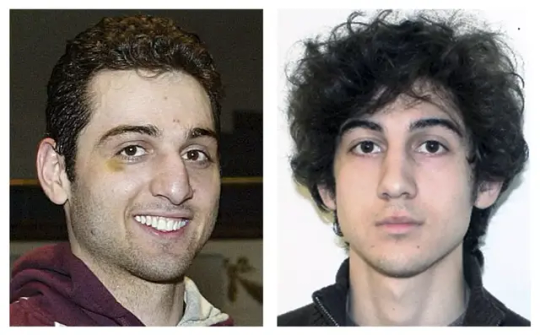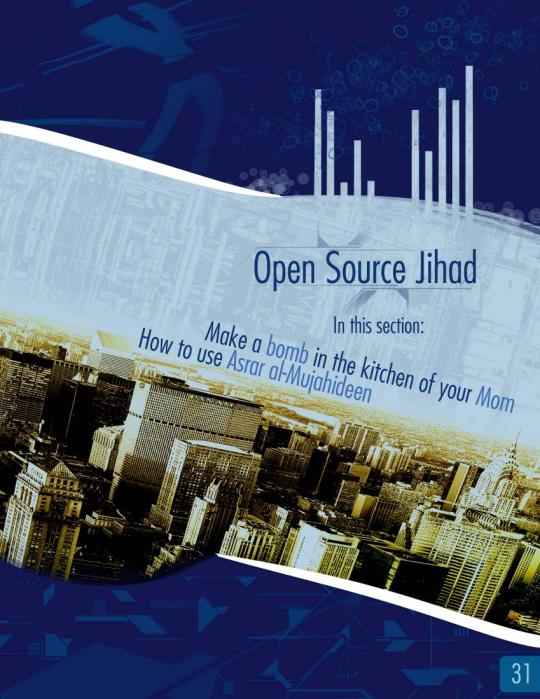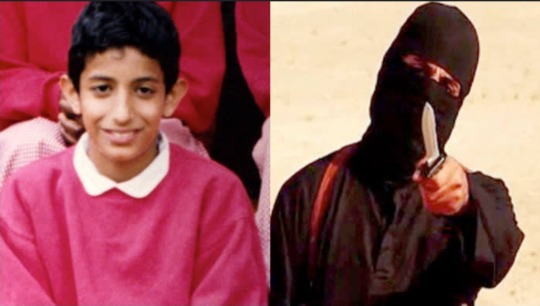#online recruitment trends
Explore tagged Tumblr posts
Link
The digital transformation is a key factor driving factor in the online recruitment market. The market for online permanent recruitment dominated the...
#adroit market research#online recruitment#online recruitment market#online recruitment 2019#online recruitment trends
0 notes
Link
0 notes
Link
#adroit market research#online recruitment#online recruitment market#online recruitment 2019#online recruitment trends
0 notes
Text

#jobsearch#jobseekers#jobs#online jobs#jobs in dubai#employment#careers#recruitment#earn money fast#how to earn money#money#old money#make money online#earn money online#money problems#invest#income#cash#finances#wealth#frases virales#viralpost#viral trends#viral video#viral#foryou#trending#foryopage
3 notes
·
View notes
Text
Maximizing Your Hiring Potential with Free Job Posting Platforms

Free job posting platforms are not just budget-friendly—they’re a game-changer in modern recruitment. This article provides insights into how companies can optimize these platforms to attract a diverse and qualified talent pool. Explore techniques such as using SEO strategies, crafting engaging job descriptions, and incorporating employer branding to stand out. Learn how automation and AI can streamline your recruitment process, making it easier to find the perfect fit for your organization. Start maximizing your hiring potential without breaking the bank.
Readmore....
#Automated Candidate Screening#Cost-Effective Hiring Strategies#Future of Hiring#Recruitment Best Practices#Digital Recruitment Tools#Talent Acquisition Trends#Online Job Boards#Data-Driven Hiring
1 note
·
View note
Text
The Dilemmas and the Innovations Of Talent Acquisition with Dy Patil Online
Talent acquisition is highly imperative in the dynamic world of business. The role would highly suit those who want to enhance their skill sets with an online MBA in the stream of Human Resource Management. DY Patil Online MBA stands apart among other universities offering comprehensive online MBA programs-regarding flexibility and depth of knowledge required in mastering the complexities of…
#Digital Recruitment#Distance Learning#DY Patil Online#HR Trends#Innovation in HR#MBA#Talent Acquisition
0 notes
Text
According to the report, the online recruitment software market generated $1.8 billion in 2022, and is estimated to reach $4 billion by 2032, witnessing a CAGR of 8.6% from 2023 to 2032.
#Online Recruitment Software Market#Online Recruitment Software Market trends#Online Recruitment Software#Online Recruitment
0 notes
Text
Benefits of Using an Online B2B Panel for Surveys
This blog will explore the advantages of using an online B2B panel for surveys and how it can empower companies with valuable data for better decision-making.
#audience targeting#B2B market research#business decisions#Business intelligence#Data accuracy#Data collection methods#data insights#data-driven decisions#Decision-making#efficient data collection#Industry Trends#market analysis#market insights#market xcel#online B2B panel#online panel advantages#Panel recruitment#Research outcomes#survey benefits#survey efficiency#Survey optimization#Survey participation#survey response rates#Targeted audience
0 notes
Text
a game where we hurt each other
Last month, I played perhaps the most intense TTRPG session of my life as part of the Dream Library’s discussion of Bluebeard’s Bride, a game of “feminist horror” (more on this later) published by Magpie in a gorgeous print edition. Over the course of the month of October my guest lecturer/collaborator @marvelousmsmolly I collectively hosted three sessions of what was by far the most challenging game the Dream Library has ever discussed.
We came to Bluebeard as the second part of our fall semester covering games of intimacy and monstrosity — a unit which began in September with Avery Alder’s Monsterhearts 2 and is continuing this month with Vampire: The Masquerade (If you want to get in on the VTM discussion and future semesters, please, come join). Both Molly and I suspected that Bluebeard was going to be both a quieter month and a riskier text — but opted to play through it anyway, albeit with some tools in place to make sure everyone knew what they were getting into with a book that doesn’t pull many punches. And with all that, the first two sessions went... fine? We had some lumpy pacing, some conflicting styles of play, some questions about how a game that really seems to encourage player bleed can possibly be played online, but for the most part things were fine. Not great, not bad — not worth the anxiety we’d had about them.
And “fine,” of course, doesn’t make for interesting conversations, so Molly and I took a step back. We talked about what was going wrong: a sense that neither of us quite felt comfortable hitting hard enough, even though we asked players ahead of time and at the start of sessions to tell us what was off the table. A frustration that player choice had trended towards the Bride as a detective/hero and not someone embodied in a world of horror. A confusion — once again — over what it means to “shiver with terror” in a discord call with some friends online. Out of that conversation came a new idea: rather than two more one-shots, Molly took some time to charge up a spirit bomb and put together some more formal prep, then recruited a group she felt could get together for a more curated experience. She wrote up her own excellent thoughts on what went down — along with a lot of session details — but you’ll have to join the Dream Library for that.
The result of all that curation and preparation was that on October 23rd a group of four trans women — Molly, @jdragsky, our friend Mars, and I — sat down to play Bluebeard’s Bride knowing exactly what we were in for. We would be playing a transfem Bride, Bluebeard would be cis, and we would be hitting transfem-specific horror as hard as we possibly could.
I’m going to quote from Molly’s reflection, where she wrote:
“Another really great aspect of running this game for this table is there was such a clear feeling that we all understood, wordlessly, what was going on... There are some moments in Allison Rumfitt’s gothic horror novel ‘Tell Me I’m Worthless’ where it felt like the author, a trans woman, was dropping phrases knowing exactly how her transfem audience would react... This had a twofold effect of both giving the players a chilling moment but also, a very brief but appropriate separation between fiction and player where could all grimace and be together in that discomfort before pushing on. People knew what I was doing. The problem with the original game is it doesn’t really want to discuss the politics of what “feminine horror” means. Because of this you’re really lacking some focus. I think a table of cis women could actually play bluebeard’s bride in the way we did last night and have it hit hard for them if they approached it correctly, I don’t think our experience was uniquely elevated by our trans reading, however that was one of several tools we used for that elevation.”
Setting aside the strengths and weaknesses of the original text, that sense of shared experience was key to our game and key to allowing us to hit — and get hit — really hard and trust that our coplayers were there with us. Compared to our earlier efforts (prioritizing safety by taking things off the table via lines/veils) tightening the topical scope from an ambiguous “feminist horror” to a specific transfeminist horror in the context of a chaser bf, in the context of an economic disparity, in the context of the medical pressures of transition in the contemporary U.K. allowed Molly, our lovely host, to hurt us knowing that we were all in it together and choosing to play this game. It transformed the horror from an obstacle in an adventure game into a thing we were seeking out: a pleasure/pain we asked to feel.
In a games discourse that is — understandably — interested in protections which might be implemented anywhere, including at cons and home tables with much less of an art-and-politics interest, safety tools are often thought about as a negative thing, a preemptive cutting away of all the things which might end up hurting us. I think that’s part of why people can have a hard time filling out a lines/veils list in advance of a session. What are all the things in the world I’m sensitive to? What are all the contexts in which I’m sensitive to them? Good sensitive or bad sensitive? Sensitive enough to cause a scene? Sensitive enough to make it off the table?
In place of that — and in a table with a really remarkable amount of trust — this final Bluebeard session leaned in, hard, to the things that hurt us. That was the game. Molly wrote a lot about kink in her reflection, and I think she was right to do that. The point of the game was to hurt each other and to feel, and it was a better game for keeping that in mind. It was an actual horror game, and not just a game with horror aesthetics. I agree with Molly that there was nothing essential about having an all-transfem table — I think what we did could be done by anyone, even with the base Bluebeard’s Bride. What was essential was having a table where we all trusted each other enough to play a hurting game and to know that we were there on purpose. It elevated Bluebeard’s Bride into a really fascinating, messy experience — one I can’t wait to play again.
355 notes
·
View notes
Text
On Boxing Day pro-Palestine demonstrators met customers at the Zara sale in the Westfield shopping centre, in Stratford, east London. They were not there to wish them the compliments of the season.
‘Bombs are dropping while you’re shopping,’ they chanted, as police stood by to make sure the protests did not turn violent. ‘Zara is enabling genocide,’ their placards read.
Quite what they wanted bargain hunters to do about the Israeli forces bombing the Gaza Strip, they never said. Lobby their MPs? Politicians are on their Christmas holidays. Join the Palestinian armed struggle? It was unclear whether the shopping centre had a Hamas recruitment office.
But on one point the demonstrators were certain: no one should be buying from Zara. Even though the fashion chain has not encouraged Israel’s war against Hamas, earned income from it, or supported Israel in any material way, it was nevertheless “exploiting a genocide and commodifying Palestine's pain for profit”.
Zara, in short, has become the object of a paranoid fantasy: a QAnon conspiracy theory for the postcolonial left.
The Zara conspiracy is an entirely modern phenomenon. It has no original author. Antisemitic Russians sat down and wrote the Protocols of the Elders of Zion in the early 20th century. There was an actual “Q” behind the QAnon conspiracy: a far-right activist who first appeared on 4chan message boards in 2017 to claim that a cabal of child abusers was conspiring against Donald Trump.
The Zara conspiracy was mass produced by social media users: an example of the madness of crowds rather than their supposed wisdom. The cause of the descent into hysteria was bizarre.
In early December Zara launched an advertising campaign featuring the model Kristen McMenamy wearing its latest collection in a sculptor’s studio. It clearly was a studio, by the way, and not a war zone in southern Israel or Gaza. McMenamy carried a mannequin wrapped in white fabric. The cry went up that the Spanish company was exploiting the suffering of Palestinians and that the mannequin was meant to represent a victim of Israeli aggression wrapped in a shroud.
The accusation was insane. No one in the photo shoot resembled a soldier or a casualty of war. Anyone who thought for 30 seconds before resorting to social media would have known that global brands plan their advertising campaigns months in advance.
Zara said the campaign presented “a series of images of unfinished sculptures in a sculptor’s studio and was created with the sole purpose of showcasing craft-made garments in an artistic context”. The idea for the studio setting was conceived in July. The photo shoot was in September, weeks before the Hamas assault on Israel on 7 October.
No one cared. Melanie Elturk, the CEO of fashion brand Haute Hijab, said of the campaign, ‘this is sick. What kind of sick, twisted, and sadistic images am I looking at?’ #BoycottZara trended on Twitter, as users said that Zara was ‘utterly shameful and disgraceful”’.
To justify their condemnations, activists developed ever-weirder theories. A piece of cardboard in the photoshoot was meant to be a map of Israel/Palestine turned upside down. Because a Zara executive had once invited an extreme right-wing Israeli politician to a meeting, the whole company was damned.
Astonishingly, or maybe not so astonishingly to anyone who follows online manias, the fake accusations worked. Zara stores in Glasgow, Toronto. Hanover, Melbourne and Amsterdam were targeted.
What on earth could Zara do? PR specialists normally say that the worst type of apology is the non-apology apology, when a public figure or institution shows no remorse, but instead says that they are sorry that people are offended. Yet Zara had not sought to trivialize or profit from the war so what else could it do but offer a non-apology apology? The company duly said it was sorry that people were upset.
“Unfortunately, some customers felt offended by these images, which have now been removed, and saw in them something far from what was intended when they were created,” it said on 13 December, and pulled the advertising campaign
That was two-weeks ago and yet still the protests in Zara stores continue. On 23 December activists targeted Zara on Oxford Street chanting , 'Zara, Zara, you can't hide, stop supporting genocide', even though Zara was not, in fact, supporting genocide. On Boxing Day, they were at the Stratford shopping centre.
Zara has apologised for an offence it did not commit. There is no way that any serious person can believe the charges against it. And yet believe them the protestors do. Or at the very least they pretend to believe for the sake of keeping in with their allies.
Maybe nothing will come of the protests. One could have argued in 2017, after all, that QAnon was essentially simple-minded people living out their fantasies online. Certainly, every sane American knew that there was no clique of paedophiles running the Democrat party, but where was the harm in the conspiracy theory?
Then QAnon supporters stormed the US capitol in January 2021. Will the same story play out from the Gaza protests? As far as I can tell, no one on the left is challenging the paranoia. I have yet to see the fact-checkers of the BBC and Channel 4 warning about the fake news on the left with anything like the gusto with which they treat its counterparts on the right.
To be fair, the scale of disinformation around the Gaza war is off the charts, and it is impossible to chase down every lie. But when fake news goes from online fantasies to real world protests, from 4chan to the Capitol, from Twitter to the Westfield shopping centre, it’s worth taking notice.
Sensible supporters of a Palestinian state ought to be the most concerned. No one apart from fascists, Islamists and far leftists believes that Israel should not defend itself. And yet the scale of its military action in Gaza is outraging world opinion. Mainstream politicians, who might one day put pressure on Israel, remain very wary about reflecting the anger on the streets.
They look at the insane conspiracy theories on the western left and see them as no different from the insane conspiracy theories that motivate Hamas, and they back away.
The Palestinians need many things: an end to the Netanyahu government, and an end to Hamas. But they could also use allies in the West who do not discredit their cause with dark, gibbering fantasies.
504 notes
·
View notes
Text
Hello, I am the one who started the Tumblr!HelluvaVerse Critical Self Aware Blog Trend, AMA!
As people wonder why I did them? Well you can shoot an ask and I'll answer for now this is what the Self Aware AU is like.
Everyone BUT Stolas is self aware of how stupid everything is, the reasoning for WHY Stolas is singled out is because why not? We're strictly ANTI-STOLAS here.
All blogs run by the same concept but the people behind the blogs have their own Headcanons and takes on the characters, the only things that remain are based on @mammoncriticizes, @seraphinacriticizes and @pentiouscriticizes sides.
Satan is the true ruler of Hell and has a DAUGHTER named Jezebel.
Infodumps and Loredumps made by all three of the mainblogs will be posted between asks, so it's a blink and you miss type deal.
Why did you make this?
I don't know, wanted to have fun with working together with the Critical Community, by taking inspo by the Instagram!HelluvaVerse but do it with Tumblr a united front that has similarities to most things.
I'd like to thank @moxxiecriticizes for being the first person to join then recruiting @0ctaviacr1tical as well. I was doing this for shits and giggles and it looks like we MIGHT actually pull this off.
I'd like to join where can we start?
Well, goodie! There's a way you can do it!
Just make an account and shoot me an ask! I usually respond to them as fast as I can!
Join the Self Aware AU Community Tumblr and shoot your shot there. (https://www.tumblr.com/join/pnuZQ40)
Or request a character in a google forum which had NOT yet been made.
Also, make sure your name has some variant of critical or criticizes in it! With the characters name and what they are in the bio so we can identify us!
What's the AU about?
Mammon, being the first to break free from this illusion began to realize that 2 + 2 does not indeed equal fish as he questioned around early season one, and realized he was forced to do things that he normally wouldn't do under any circumstances. With the help of online Hellblr he is able to contact people through OUR tumblr space somehow to connect with a wider audience through some means.
With that, there's been an influx of people joining the cause, and with every new critical blog popping up that means more and more characters are currently realizing just how fucked up their world truly is.
Status on Redesigns.
As we stand, we do accept redesigns as we would like to rebrand the characters and we're using this AU to reinvent the new storyline so if you end up drawing the posts we make then we accept it. Reblog it as well.
Blogs In Order of Creation
@mammoncriticizes / @mammoncritical @seraphinacriticizes @moxxiecriticizes @pentiouscriticizes @0ctaviacr1tical @fizzcriticizes @stellacriticizes @soberedupcatcritises @loonacriticizes @duskcriticizes @nyxcriticizes
REFER TO THE ABOVE IF YOU HAVE ONE ALREADY. It's recommended you make it a side blog, we might actually have people run the Seraphina and Pentious blogs if people wanna join.
#. 💞 ; txt#hazbin hotel critical#helluva boss critical#spindlehorse critical#anti stolas#anti spindlehorse#vivziepop critical#anti vivziepop
55 notes
·
View notes
Link
0 notes
Text
Toxic till the End DL AU PT 1
I am not someone who knows much about K-Pop. I've really liked the new Rosé stuff though especially her album rosie? In further pondering I can’t help but want to point out how perfect of a face cast it would make for Yui Komori.


Like the make up style is exactly what I envision from Yui, not too bold but blush heavy shiny, youthful makeup. With the douyin type lip gloss AND her ringlets were absolutely perfect. Like tell me that’s not Yui.

So obviously with the singles roll out, I think the last one was “toxic till the end” and it’s such a nostalgic pop sound I missed and the cinematography is everything in the video so I just wanted to write some Human/Idol AU diabolik lovers headcanons based off it. It has been a while since i’ve written anything so bare with me pls. Love u xoxo
I added more disclaimers whilst I was writing this but I have something planned for the other brothers too and something from Ayato’s pov so if this looks a bit unfinished trust there’s more. Lemme know which brothers you want because this AU has ran away from me and become literally massive
So in the human au I’d still say Yui is raised in a church, but she’s super cute right so she gets street recruited by a company and she’s not like a major super popstar but since she was a teenager she does little commercials, dance trends, magazine shoots
She grows quite famous online for her innocent, kind of whimsical, head in the clouds imagery alongside her very pious upbringing I suppose like how Adriana Lima used to say before she was a VS angel she wanted to be a nun.
She used to be in her church choir and eventually her company moves her from just modelling/trainee to being put together with some girls in an idol group.
It doesn’t work out, idk maybe the company doesn’t think there’s enough chemistry within the group dynamics or it didn’t rake in enough money. Anyways Sakamaki Corporations ( see what I did) tell Yui they consider sending her to an Idol Show for more popularity because they think she has potential as a soloist
Uhhhh this is the bit where you can tell all my idol knowledge is completely made-up and from vague conversations with my friends.
I believe sometimes idols are sent abroad? Or maybe sent to accommodations to be kept safe and hidden while they train. So she’s sent to “Sakamaki Mansion” because of her father and the CEO of Sakamaki Corps. were old friends or at least that’s what she’s told.
I don’t want to make the boys live with her…but I’m cooking here #trust
She goes to the same school as them. I think that can stay the same, especially because it’s a night school for idols.
Ciao.
Anyways this is where I think we can insert the toxic till the end music video.
I'm also aging them up so Yui meets Ayato on the precipice of 18 because they plan for her to debut at 18/19.
I will also be incorporating some of the visuals from the actual video
So Yui in her last couple of teenage years is driving (in my country you can drive at 17 don’t question it) back from school to her mansion, where she sees this scrawny boy on the side of the road, with a gym bag swung over his shoulder and a broken bike at his side. She slows down because of his hair.
Yes Ayato is one of the most handsome men she’s ever seen in her life but his hair is in a buzz and it's pink!! And she loves the colour pink!
(again visuals people do you see my vision)

So obviously she says yes and brings him home with her, like this is a little miss romantic and Ayato is her peter pan almost. All her life is routine and lessons and he creeps in all mischief and cheshire cat smirks and she’s smitten.
Ayato is obviously enamoured with her, she’s just so cute and she sincerely seems to care about him. And they make a good pair like the perfect young love.
Ayato with his buzz, scruffy uniform and bad boy reputation who goes everywhere on his skateboard but keeps his hand in the backpocket of his sweet, bubbly church choir/idol trainee gf. They’re a vision to see.
At first he’s quite secretive and he explains to her his family is quite dysfunctional and messed up. Even though they go to the same school he sets up rules like they’re not allowed to ever talk to each other in school and she should absolutely never talk to his brothers and they can’t go on public dates.
At first my little romantic (her rose-tinted glasses paired with actual rose coloured eyes mean all those red flags look like big love hearts) Yui is quite miffed because this is her first ever boyfriend and she really loves him and he’s soooooo charming to her. But it works out quite well because she gets to keep her good student, scandal free rap sheet. And her bf
She knows how fucked up his home life is so sometimes he’ll run away and come live with her and it’s literally a dream for her. It’s so domestic, they have picnic dates in the rose gardens, they swim together in the lake and cuddle up together on warm summer nights whilst gazing at the stars.


Ayato loves holding her hands, kissing her and he always seems to be wanting to touch her in some way or the other. They cook together, or she’s baking something because he keeps getting her to cheat on her diet, convincing her they’ll burn the calories in a different way. And sometimes after school they’ll meet up in the woods to walk home wrapped up in each other and he teaches her all kinds of things, from smoking and drinking to stealing her first kiss. He carries her around like she’s nothing, and he can be so romantic to an annoying teenage boy but she doesn’t care because she’s never been this carefree. He gives her Tiffany rings, and other expensive gifts, dresses her in his clothes, and doesn't want anything from her but her staying beside him. For her first ever exposure to love this is peak romance, his promises of her successful debut and him becoming an athlete where he’s successful enough to openly tell everyone to back off because that’s his girl.
It's a random Thursday where he’s staying over and Yui has fresh flowers and candles lit all over the house. It’s just been a good week, she’s a little tired from practice but Ayato has been an absolute darling. Massaging her legs (it turns into him groping her whilst she giggles trying to get away), he brought some fast food, made an absolute fool of himself falling into the pond and finding out she can’t swim.
So they spent an afternoon where she basically clung onto his shoulders and him wrapping his hands around her waist, whispering into her ears and then he’s teasing her for how red she is. It’s been bliss. They are sat by the fire, he’s in loose sweats and he realises she’s wearing one of his boxers and tanks but it starts raining outside and she flinches at thunder.

I think this is a pivotal moment in their relationships in the warm amber glow, where Yui opens up about being an orphan and hating the thunder because the day her parents left her there was a storm.
Ayato in turn pulls her close, and he’s so close she can feel his breath on her cheeks his hands are around her ears as he’s slowly caressing her cheek telling her she’s fine and he’s here for him. This is her “oh. Oh.” moment because she’s so in love with this boy and she knows it’s him or nothing.
And she can see it in his eyes when he starts opening up about his bruises and how sometimes he lies about them being from skateboarding accidents. When they tell this story much much later everyone assumes Ayato kisses her. What they don’t know is all Yui knew in that moment is that she never wanted to see her beautiful boyfriend so sad again so she leans in to initiate their first kiss.
That's history…or the beginning of the end.
#diabolik lovers#diahell#yui komori#reiji sakamaki#ayato sakamaki#shu sakamaki#laito sakamaki#dialovers#diabolik lovers headcanons#dl headcanons#dl fanfiction#komori yui#sakamaki ayato#ayayui#human au#idol au#Spotify
57 notes
·
View notes
Text
The Game of Common Interests: The Symbiotic Relationship of Terrorism and The Media
Mass media and terrorism have developed an interdependent relationship. The media is the terrorist’s breath of fresh air, and it is the lifeblood and sustenance of terrorism, where the media often capitalizes on the public's confusion, intrigue, and paranoia following terrorist attacks by producing sensationalized news that captures widespread attention. This dynamic, however, plays into the hands of terrorists, who exploit the extensive coverage to spread the agency of their extremist agendas and beliefs, particularly targeting and influencing vulnerable audiences, such as the youth. Professor Taha Najem of Naif Arab University had described this relationship as “symbiotic”.
In Najem's own words:
"As for the extremists, they precisely calculate the scope, location, and timing of their attacks to generate ample media attention,—or in other words, to generate advertisements for their messages on a global scale. The broader and more prolonged the media coverage of terrorism turns out to be, the greater the terrorists' feelings of accomplishment, influence, and power." (Najem, 2017).
Bruce Hoffman, the Director of the Center for Security Studies at Georgetown University said:
"Only by spreading the terror and outrage to a much larger audience can the terrorists gain the maximum leverage potential."
Najem argues that the relationship between the two can be understood through the media's tendency to capitalize on horrific tragedies. It often uses these as newsworthy scoops that not only provide information but also serve as marketing opportunities and profitable publicity. In some instances, the media may unintentionally promote terrorist operations by offering excessive coverage, which is driven by their own incessant need for fame, power, money, and influence. This aligns with the perpetrator's likeness, where some stage attacks often with the sole purpose of gaining publicity and creating propaganda rather than resolving political demands.
Researchers have established that media coverage is pivotal to the success of terrorist attacks, with the scope and intensity of coverage often being more important to terrorist groups than the quality of the reporting. However, this perspective can also be overly simplistic, as it overlooks the complex relationship between media coverage and public reaction. It also fails to consider that not all terrorists prioritize publicity over their other tactical or political aims. Additionally, the complex interplay between the media and terrorism cannot be fully understood without considering the role of the state.
Not only does this occur in mass media, but also creating trends within specific online communities. From this, we can see how there is a benefit in both parties: terrorists gain the publicity they desire, while the media profits from the heightened public interest, increasing the influx of coverage because of the heightened value. Furthermore, many individuals drawn into terrorism have been influenced by channels, websites, magazines, and other forms of media that promote bombings and suicide missions, highlighting the powerful role media can play in the recruitment and radicalization process. With this, here are some ways in which the media benefits terrorism, and vice-versa. Allowing media prevalence through marketability and terrorism through radicalization.
World Trade Center Bombing, 2001.
On September 11, 19 terrorists from al-Qaeda hijacked and attacked the World Trade center, following four coordinated bombing-suicide attacks against the U.S. There were 2,996 deaths and approximately 6,000 injured. Over the past two decades after the attack, mainstream media audiences have witnessed a significant shift in how news was presented: the rise of dramatic and emotional storytelling, or what can be termed as "public drama."

This approach has increasingly dominated the media landscape, being a central focus on various platforms: lead stories on news programs, main broadcast discussions, and bold headlines on newspapers. This had become a prominent framework for delivering news, particularly in television, due to its entertainment-like qualities. By simplifying complex stories into easily-digestible and compelling narratives with vivid images, the audience is more engaged. News organizations and media professionals favor this dramatic approach because of the direct and cost-effective production.
The 9/11 attack is a prime example of this trend. When news broke of a plane crashing into the World Trade Center, broadcasters were initially unprepared for the unfolding catastrophe and the dramatic and chaotic nature of the events presented challenges in conveying the news. With initial coverage featuring footage of billowing flames and smoke from the collapsed towers, the explosion of the Pentagon, and the emergency response—all were easily committed into the viewer's memories. These images captured the raw scale of the disaster and its immediate aftermath. The people were confused, afraid, and intrigued—then they became invested. Thus, the sensationalization of news was adapted.
Oklahoma City Bombing, 1995.
On April 19th, just the second anniversary of the end of the Waco siege, domestic terrorists Terry Nichols and Timothy McVeigh detonated a nitrate-fuel oil bomb in the Alfred P. Murrah Building, claiming 168 lives and injuring 680 others.


Timothy McVeigh was one of America’s most notorious domestic terrorists, and with his involvement with the crime, he was then sentenced to death by lethal injection. In June 2001, the Federal Bureau of Prisons was responsible for the execution of McVeigh. Linda Smith and John Roberts, in their journal article, delve into one significant instance where media demands placed a heavy burden on the Federal Agency. During this time of McVeigh's execution, the Bureau faced a difficult dilemma: balancing the need to facilitate media coverage of the execution while ensuring the safety and security of the maximum-security penitentiary where it was conducted.
This situation highlights a broader paradox faced by many federal agencies. They are tasked with providing information to the media while simultaneously navigating ethical, budgetary, and legal constraints that limit their engagement in traditional public relations activities, such as advertising and lobbying, common in the private sector. Public affairs officers are legally obligated to release non-sensitive information, yet they must carefully avoid disclosing material exempt under the Freedom of Information Act and Privacy Act, as individual officers can be held criminally liable for such breaches. This tension between transparency and security underscores the complex challenges these agencies must navigate in their public communications.
Boston Marathon Bombing, 2013 and INSPIRE MAGAZINE.
On April 15th, exactly on America's Patriot's Day, Tamerlan and Dzhokhar (Jahar) Tsarnaev detonated two pressure cooker bombs at 2:49 p.m., just a few of hours after the winner completed the Boston Marathon, totaling to 6 deaths and 281 injuries.


Jahar had a fascination with fireworks and explosives, while Tamerlan exhibited early signs of radicalization. Although there were no proper links of the two to terrorist groups, Jahar had revealed that the two obtained plans from Inspire, specifically its first issue revealing a step-by-step recipe on creating pressure cooker bombs or Improvised Explosive Devices (IEDs).
Inspire is an English online magazine published by al-Qaeda in the Arabian Peninsula (AQAP), infamously known as the group that perpetrated the 9/11 and PAL 434 attacks. The magazine is one of the many ways AQAP spreads its online agenda. Both international and domestic extremists have been motivated by radical interpretations of Islam and, in some cases, used its bomb-making instructions in their attempts to carry out attacks.



The insurgence of the 'Jihadi John Slideshow Trend'
During the period of 2014, youtube videos uploaded by the Islamic State of Iraq and Syria (ISIS) started surfacing on the internet. This was characterized by a series of masked militants criticizing the American or British government and then tying in the statements by the gruesome beheadings of hostages, ransoms, and soldiers.

Terrorists had often used their media presence as a driving force to influence the youth into affiliating themselves with terrorist ties. One of these was Jihadi John, unveiled as British militant and Kuwaiti-born Mohamed Emwazi. In these videos, Emwazi is often seen looming over the camera holding a knife and standing next to a kneeled hostage. He ends every video by beheading his victims. One of his most famous videos was the beheading of American Journalist James Foley.
Around June 2010, Emwazi was detained and in the middle of 2020, the insurgence of the “Jihadi John Slideshow” trend had reached tiktok. While the origins of this trend still remains obscure, this has left a lasting impact on the youth. Often, the demographic consisted of teens, specifically young males, who romanticized and glorified the acts of violence portrayed by Emwazi and the aesthetic of militaristic weaponry. Many had credited this behavior to “edgy” standards and humor, however, this idealism was proven to be more unironic than it seemed. Eventually, in the proceeding years, the trend had died out, however, it had came back a few times during period intervals of 2022 to 2023.
This trend had also harmfully villainized harmless ideologies, distorting these ideas to the point where it is repulsing for the public’s perception. An example of this is the concept of Jihad, where it is essentially the Islamic philosophy of struggling to defend the religion and attaining peace within the community and outside of it. It promotes the unity and solidarity of individuals where militaristic action is only done as a last resort of intervention. Often, Jihadi groups such as al-Qaeda and ISIS have spread distorted and extremist versions of this ideology, creating a brand new concept of utilizing violent militaristic resistance to protect Islam. With this dangerous approach, muslim communities are stigmatized, discriminated against, and stereotyped. This is especially harmful because it is a large problem that affects the community in various ways, especially when terrorists rebrand concepts initially striving to attain peace as acts of hatred and war, tainting a beautiful religion with images of violence.
Conclusion
Circling back to Prof. Najem’s analysis, without the media’s attention and focus, terrorists are unable to achieve any of the following four objectives: (1) recognition of the group name or ideology, (2) ability to communicate with supporters, (3) communicate with members of the local government, (4) and depict itself as a legitimate political alternative to the current governments. To conclude this essay, the relationship between mass media and terrorism is a complex and interdependent one, where the intricacies of both entities should be carefully observed and analyzed to unravel the deeper connections between the two.
While some researchers argue that media coverage is essential for the success of terrorist attacks, this view is sometimes overly simplistic and does not fully capture the intricate relationship between media portrayal and public reaction. Additionally, not all terrorist groups prioritize publicity over their other objectives. The symbiotic relationship between the media and terrorism is further complicated by the role of the state, which must balance transparency with security.
Several case studies, including the Oklahoma City Bombing, the Boston Marathon Bombing, and the rise of figures like Jihadi John, highlight the ways in which media coverage can both shape and be shaped by terrorist actions. These examples demonstrate how terrorist groups leverage media to spread their message and recruit new members, while the media, in turn, benefits from the increased attention and revenue generated by such coverage.
Ultimately, this relationship underscores the powerful role that the media plays in both perpetuating and combating terrorism. The challenge lies in finding a balance between reporting news and preventing the unintentional promotion of extremist ideologies.
#understandnotcondone#oklahoma city 1995#timothy mcveigh#world trade center 2001#boston marathon 2013#jahar tsarnaev#tamerlan tsarnaev#jihadi john#mohamed emwazi#trrsm
80 notes
·
View notes
Text
Headcanon: Just because they are dating it doesn't mean they are less awkward
I was answering a comment I got, when I started thinking about what would happen if Miles and Gwen started dating?
My first thought: "Oh the adaptation period is going to be fun."
Both in fiction and in real life, you can have a period of time when friends who had been crushing for too long may be trying to not come too strong to the other person in case their new partner hasn't fallen as deeply in love as themselves.
Do I think this would happen with Miles and Gwen? Oh for sure.
Gwen in general tries to hide her emotions and while I think being with Miles will loosen her up a bit, I think she may get shy about how much she likes him (specially considering some things she did while crushing.) Miles I think would do so as well, since it has been his normal to try to tone down his crush, and seeing how "collected" Gwen can be, would try to act "cool."
All of this rambling is now for a list of headcanons of the stupid things they did because of this and that they try to hide from each other before they realize how silly they are.
Let's go!


They both do a victory lap, or the spidey equivalent, swinging across their respective New York after Miles asked Gwen out.
Miles is the loudest, swinging across the streets while screaming in excitement a few times, including one time when he screams "SHE LIKES MEEEEEE."
This ends up with a bunch of people online not only reposting clips of the video where he screams that, but people speculating who could be the mystery girl who seems to like him. Miles panics thinking Gwen may think he is cheating on her and Ganke needs to be there to calm him down and devise a plan to get gossip people into something else.
Gwen isn't much better, she doesn't really scream anything, however she ends up doing a bunch of daredevil tricks and jumps because her excitement manifests in see-how-many-gymnastics-record-I-can-break.
She ends up scaring the living shit out of her dad, who was trying to react very normally when a coworker show him a clip of just a part of it (she literally did this by a good part of the city, so there are different videos.) The gymnastic Olympic team of the United States is once again trying to recruit Spider-Woman. There are now people making recompilations of videos to see if there is a way to catch the whole thing, and some people had noticed that in some clips it almost looks like she is squealing.
Gwen recruited Peni's help to take down the most incriminating videos, mostly because it was impossible to take all of them down. She also begged Peni to have a way for her dad to not find some videos on his phone. I imagine her dad may be a bit protective of her and while Gwen told him she is dating Miles, she doesn't want her dad to realize how madly she is in love with him.
(He knows, he remembers the Polaroid.)
Because of this, the first few days together they try end up planning dates in other universes, because both of them are waiting for those videos to not be trending. Gwen ends up dancing with Miles in Hobie's universe, while Miles shows Gwen a crazy arcade in Margo's universe.
Miles is ALWAYS smiling, depending on how much he has been in his mind he may look more lovesick or casual. Everyone has been teasing him, Ganke, his parents and Peter B the most.
I already headcanon that Gwen is actually a cuddle bug, she just has trouble leaning into others because of her vulnerability issues. So Gwen is constantly trying to measure how much she tries to hug him, to not look too eager to take his hand or lean on his shoulder. Is a tougher battle than she ever wants to admit.


Miles ends up drawing Gwen even more often, especially since he has pictures of her and stuff; so before he knows it, he ends up with this beautiful mural of her. He isn't sure when to reveal it to her because he has added so many little detail and drawings he is afraid to come out as creepy.
Like many people, I headcanon Gwen has tried writing songs about Miles. Well the new relationship status made her finish one of those songs, which her bandmates liking, and Hobie also insisted she should play it next time in his universe.
"Next Time" ends up having the spideygang (Miles, Pavitr, Margo and Peni,) at the concert. Hobie remarks that the next song is written by his drummer, and it doesn't take long for Miles to be smiling once more like a lovesick puppy once the lyrics appear.
Gwen is a bit embarrassed, but he says he loved the song, and he would love to hear more if she ever does. He shares some of his art, and she is, of course, melting.
He doesn't take too long before showing Gwen the mural, and Gwen loves it. Is hidden below a bridge, in a place you can only see while being upside down; and she adores how Miles shown her drumming, her dance, he captures her from her eyes to the little tooth gap she has, and yet Gwen cannot stop being amazed at how despite showing all those things she considers flaws, she looks beautiful in all of them.
Miles shrugs saying "I just draw you like I see you."
And THEN, they become a couple of dorks in love who everyone else is getting kind of sick of how corny they are. But they are kind of stupid for each other and had been holding it for a while, so why not scream it from the rooftops?
775 notes
·
View notes
Text
KOSA PAGE-all of our strike information
ALRIGHT SO YALL HAVE RESPONDED VERY POSITIVELY TO MY SUGGESTION OF US STARTING OUR OWN NEWSIES STRIKE AND @waiting-makes-me-antsy suggested we all get nicknames like the newsies so if yall want a nickname then private message me and I will write down your new nickname on this post and I'm also letting yall pick my nickname
What is the KOSA newsies strike?
All across tumblr and similar platforms, kids like us have found their people. People who share the same difficulties, people who have gone through the same things, or just friends. I have found some amazing people on tumblr, and KOSA would take all of that away. KOSA would take away the support many LGBTQ community members have found, the support many people with mental illnesses have found, and so much more beyond that. We are striking to show KOSA that we deserve a voice too! Freedom of Speech!
Me: Hops
@waiting-makes-me-antsy 's nickname is Antsy Whispers
@lincoln-rosario is Link
@eponine-thenadier is Olive (Vice President)
@hey-they-was-coronas is Reeses
@blinkinbrothershark is Twig
@sad-camper is Pollen
@racetracks-fvckin-chair is Quill
@theatrical-cowboy is Dice
@mothmans-spaghettios is Cryptid
@h0n3ycombb is Bunny!
@atticuswhat is Storm!
@ask-riff-lorton RIFF LORTON LADIES AND GENTS
@elmer-not-the-glue as Stars
@poorguysheadisspinning1923 is Fidget!
@00-tricycle-0 is Trig!!
@bigmack2go is Junior!!
Update: yall can go vote my my nickname I gave four options
Officers
@the-realest-spot-conlon (Me)- President
@eponine-thenadier Olive-Vice President
Secretary is open!
@waiting-makes-me-antsy Antsy Whispers- Assistant Vice President
@hey-they-was-coronas Reeses-Recreational Leader
Treasurer is open!
@bigmack2go solidarity-general Marshall
Our Tag
Tag any KOSA posts with "KOSA newsies strike," so it starts trending!
Petition
https://www.change.org/p/save-our-free-and-open-internet-stop-the-kids-online-safety-act?utm_content=cl_sharecopy_36858566_en-US%3Acv_9182&recruiter=1282470979&recruited_by_id=cdf22210-5591-11ed-b8c6-db7e30faf378&utm_source=share_petition&utm_medium=copylink&utm_campaign=psf_combo_share_initial&utm_term=psf&share_bandit_exp=initial-36858566-en-US
#newsies#spot conlon#92sies#racetrack higgins#sprace#jack kelly#davey jacobs#newsies incorrect quotes#KOSA newsies strike
109 notes
·
View notes